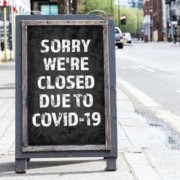Qualified Small Business Stock: Do You Qualify for Its Taxable Gain Exclusion?
- Learn about QSBS exclusion periods, maximum exclusions, strategies, and more.
- Understand how to retain QSBS status.
- Manage state taxation and rollovers.
IRC Sec 1202, Qualified Small Business Stock (QSBS) gain exclusion, provides a significant tax planning strategy. Sec 1202 was enacted in 1993 to encourage investment in small businesses. It allows individuals to avoid paying taxes on up to 100% of the taxable gain recognized on the sale of QSBS of a C corporation.

Whether you have a new business or are rethinking your existing business structure, Sec 1202 could be right for you. While this tax strategy is designed to benefit small business owners, some larger businesses can qualify. The benefits of Sec 1202 are a permanent exclusion of gain rather than a deferral of gain like other tax benefits. However, qualifying as QSBS can be complex so it’s important to seek professional assistance. The following is only an overview of the qualifications for this tax benefit.
When Congress originally enacted Section 1202, it allowed a 50% exclusion of gain from selling QSBS. Initially, it wasn't popular, so the exclusion increased to 75% and later to 100%. Therefore, there are three time periods for purchasing qualifying stock with corresponding gain exclusions.

Individuals acquiring QSBS stock after September 28, 2010, can avoid taxes on up to 100% of the taxable gain. Despite the label "small business incentive," a business can still qualify as "small" even if it is quite large. For QSBS acquired after September 27, 2010, stockholders can exclude up to $10 million or 10 times their adjusted basis.
With a $10 million exclusion, a stockholder can save $2.98 million in federal and state taxes, assuming state compliance. For stock issued after August 10, 1993, and acquired between 1993-2010, the tax-free gain can be 50% or 75%.
Maximum Exclusion for QSBS Acquired After Sept 27, 2010 (100% Exclusion)
For stock issued after Aug. 10, 1993, and acquired after September 27, 2010, the gain exclusion is the greater of:
- 10 million The $10 million is a cumulative limitation and is reduced by the amount of eligible gain excluded in previous sales of QSBS concerning each corporation.
- 10X basis limitation – The 10X basis limitation allows a taxpayer to exclude up to 10 times their basis of the QSBS sold in a given tax year, regardless of the number of QSBS sales or the amount of gain the taxpayer previously excluded.
Example: Sebastian, was originally issued the stock on January 15, 2016, in exchange for a cash payment of $3 million. Sebastian subsequently sold the stock on October 10, 2023, for $23 million, resulting in a $20 million gain. Since the stock is QSBS under Sec 1202, Sebastian can exclude the greater of $10 million or 10 times his initial basis of $3 million or $30 million (10 x $3 million). Thus, Sebastian can exclude the entire $20 million gain, paying no federal tax on the gain.
Strategies
There are strategies based on the circumstances of each sale that require careful consideration when applying either the $10M cumulative exclusion limitation or the 10X basis limitation.
- Basis Limitation Can Exceed $10M Cumulative Exclusion – A taxpayer who has a large basis in QSBS should consider the benefit of their QSBS basis when planning a sale. Using the 10X basis limitation on a sale of QSBS with a high basis may provide a gain exclusion that exceeds the amount available under the cumulative limitation. The basis of any QSBS the taxpayer still owns or sold in previous years is not considered. This is significant when some shares have greater basis than others or are sold over time.
- Sales Over 2 or More Years – Taxpayers can use the $10M cumulative exclusion in year one and the 10X basis limitation in subsequent years. Or as an alternative, use the $10M cumulative exclusion on the sale of shares with a lower basis and the 10X basis limitation on higher-basis shares.
Computing the Exclusion for QSBS Subject to the 50% or 75% Exclusion
For QSBS stock with 50% and 75% exclusions, first apply the $10 million limitation or the 10X basis limitation. Next, multiply the eligible gain by the 50% or 75% limitation to determine the excludable gain. Seven percent of the excluded Sec 1202 gain is a tax preference for alternative minimum tax purposes.
For qualified Sec 1202 stock issued after September 27, 2010, and held over 5 years, the excluded gain doesn't count as a preference item.(Code Sec. 1202(a)(4))
Requirements to Qualify for Section 1202 Gain Exclusion
Stock must meet eight requirements to qualify for Section 1202 benefits. Following is an overview of each of these requirements.
A. Shareholder-level Requirements
1. Eligible Shareholder
The stock must be held, directly or indirectly, by an eligible shareholder. Eligible shareholders are non-corporate shareholders including individuals, trusts, and estates. Suppose the shareholder is a partnership or S corporation. In that case, the gain may still qualify, but there are additional requirements that must be met for non-corporate owners of the pass-through entity to claim the benefits of Section 1202. Only U.S. taxpayers qualify for the Sec 1202 benefits.
2. Holding Period
You must hold the stock for more than five years before disposing of it. Generally, the holding period starts on the stock's issue date. If the stock was issued in exchange for non-cash property, the Section 1202 holding period begins on the exchange date, even if the general tax holding period carries over.
If you receive stock from converting debt or exercising stock options or warrants, the holding period starts on the conversion or exercise date. Some hedging transactions can disqualify the stock from Section 1202 treatment. Shareholders can "tack on" previous holding periods if they inherited the stock, received it as a gift, got it from a partnership distribution, or through certain stock conversions or exchanges.
3. Original issuance of stock
The taxpayer must acquire the stock upon its original issuance after August 10, 1993. Therefore, the taxpayer must buy the stock directly from the company, not from another shareholder. The stock does not need to be part of the initial incorporation. Stock received as compensation for services provided to the corporation meets this requirement (more on this later). Stock received in exchange for other stock may qualify, but it is subject to additional requirements.
In some cases, the stock can be considered as received at the original issuance even if the shareholder is not the original owner. When the stock is received via gift, at death, or as a partnership distribution, the transferee is treated as if they received the stock in the same manner as the transferor. If the transferor acquired the stock at the original issuance, the transferee is treated as having done the same. In other words, the original owner's holding period is added to the subsequent owner's holding period.
For stock distributed from a partnership to a partner, to meet the definition of QSB stock in the hands of the partner:
(1) the stock must have been QSB stock in the partnership's hands (ignoring the five-year holding period requirement),
(2) the partner must have been a partner from the date the partnership acquired the stock through the date of the distribution, and
(3) the partner cannot treat stock the partnership distributed as QSB stock to the extent the partner's share of the distributed stock exceeds the partner's interest in the partnership at the time the partnership acquired the stock.
Committee reports clarified that the issuance date is determined by the rules of Sec. 83.
Example:
In 2015, Jack received 2,000 shares of QSBS stock in exchange for services provided. The stock is restricted and nontransferable until 2020. Jack does not make a Sec. 83(b) election. In 2020, Jack fully vests in the stock, and at that time, under Sec. 83, Jack includes the FMV of the income stock. For purposes of Sec. 1202, the stock's issuance date is 2020, when the stock is vested.
When convertible QSB stock is converted into other stock of the same corporation, the stock received in the conversion is treated as QSB stock, and the date of issuance is the date the convertible stock was originally acquired by the shareholder (Sec. 1202(f)).
Example:
Jack was issued 2,000 shares of convertible preferred stock in Widget Inc., in 2018. The convertible preferred stock meets the definition of QSBS. In 2021, **Jack converts the stock into 4,000 shares of Widget Inc. common stock. The common stock received by Jack is treated as QSBS, and Jack is treated as having originally acquired the common stock in 2018.
When stock is received via gift, inheritance, or as a distribution from a partnership, the acquisition date is the date on which the transferor acquired the stock (Sec. 1202(h)(1)(B)).
Example:
On June 1, 2016, Jack contributed $1,000 to X Co. in exchange for stock. The stock meets all the requirements of QSB stock. On July 15, 2020, Jack gifts the shares to Sally, his sister. In July 2021, Sally sold the stock. Because Sally is treated as having acquired the stock on June 1, 2016, the five-year holding period is met.
B. Corporation-level requirements
4. Eligible Corporation (Sec 1202(e)(4))
Generally, the corporation must be a domestic C corporation. The corporation must qualify as an eligible corporation both when it issues the stock and during most of the taxpayer’s holding period. An eligible corporation is any domestic C corporation, excluding certain exceptions like IC-DISC, former DISC, RIC, REIT, REMIC, or cooperative. An S corporation does not qualify, but an LLC that has elected C corporation tax treatment does qualify. Additionally, while the corporation must be based in the U.S., its activities or those of its subsidiaries can be domestic or international.
5. $50 Million Gross Assets Limitation
The corporation must not have had more than $50 million of tax basis in its assets at any time between Aug. 11, 1993, through the moment immediately after the issuance of the stock. This test is evaluated at the time of each stock issuance. Once the asset test is met, this test is not reevaluated at a later date for that stock. Therefore, stock issued when the corporation has less than $50 million in tax basis in its assets continues to qualify, even if the corporation’s assets later exceed $50 million.
CAUTION: Acquisitions, fundraising rounds, licensing agreements, and inventory can cause a company to exceed this threshold and lead to QSBS disqualification.
6. Redemption Transactions
Generally, the corporation must be a domestic C corporation. The corporation must qualify as eligible both when issuing the stock and during most of the taxpayer’s holding period. An eligible corporation is any domestic C corporation, except for certain types such as IC-DISC, former DISC, RIC, REIT, REMIC, or cooperative. An S corporation does not qualify, but an LLC that has elected C corporation tax treatment does qualify. Additionally, while the corporation must be based in the U.S., it and its subsidiaries can conduct domestic or international activities.
7. Qualified trade or business requirement
The corporation must be engaged in (or performing activities to start up) a “qualified” trade or business. This includes any business other than those in the businesses listed below. Unfortunately, there’s very limited guidance on exactly what most of these terms mean and how broadly they should be construed, leaving room for interpretation by both taxpayers and the IRS. Prohibited businesses include:
- Professional service businesses include the fields of health, law, engineering, accounting, consulting, brokerage, and like businesses.
- Performing arts, athletics, or any trade or business where the principal asset of the trade or business is the reputation or skill of one or more of its employees.
- Banking, financing, leasing, investing, and like businesses.
- Farming and gardening
- Oil, gas, & mining
- Hospitality includes hotels, motels, restaurants, and like businesses.
- Real estate & other passive businesses
8. Active business requirement
The corporation must use at least 80% of the fair market value of its assets in actively conducting a qualified trade or business. The corporation must meet this requirement during most of the taxpayer’s holding period of the stock. Additionally, the corporation can allocate only up to 50% of its assets to working capital for reasonable business needs or research.
A corporation automatically fails this test if:
- 10% or more of its net assets consist of stock or securities in other corporations where it owns less than 50%; or
- 10% or more of its gross assets consist of real property not used in the active conduct of a qualified business.
Retaining QSBS Status
Once securities are exercised and converted within the QSB eligibility window, the resulting stock is unlikely to lose its tax benefit status and certification, provided Section 1202 of the tax code remains unchanged. This holds true regardless of:
- The company’s current QSB status (or lack thereof).
- Whether the company has merged with or been acquired by another corporation. (However, if the company was acquired before the five-year period ended, the QSBS holder will no longer be eligible for the benefit.) In a merger or acquisition, one of the following, or a combination, may occur: QSBS holders might exchange their shares for shares in the acquiring company, maintaining QSBS status but capping the capital-gains exclusion at the transaction value rather than the full $10 million investment cap.
QSBS holders, such as high-net-worth individuals, might cash out and defer capital gains by investing in another QSBS company. - If the stock has been transferred, gifted, or inherited. (However, if the stock was transferred to a partnership, it would lose its QSBS status.)
The following are some examples of when a stock may lose its QSBS certification:
1. If the company performs a disqualifying repurchase.
2. If the company changes its business model and begins to operate as an excluded business type.
Employee Benefits
It is permissible to issue QSBS in exchange for services, which can be a useful tool for startups and other companies short of cash to compensate employees. It also works as an inducement to retain employees; their stake in the company is an incentive to work hard and help it succeed. However, there the employer will have to pay half the payroll taxes on the employee benefits.
State Taxation
If the shareholder of company stock is a resident in one of the following states or territories, the shareholder is not eligible for the QSBS tax exclusion at the state level (as of the publication of this article):
1. Alabama
2. California
3. Mississippi
4. New Jersey
5. Pennsylvania
6. Puerto Rico
Hawaii and Massachusetts partially conform with the QSBS tax exclusion. The requirements vary based on the state of incorporation (for the company) and the state of residency (for the shareholder).
Conversions of an Existing Business
S corporation to C corporation – For stock to meet the definition of QSB stock, the issuing corporation must be a C corporation on the date of issuance. Thus, if an S corporation that otherwise meets all the requirements of a qualified small business under Sec. 1202 issues stock, that stock can never qualify as QSB stock, even if the S corporation later converts to a C corporation. Thus, if the S corporation revokes or terminates its election, it will need to issue new shares of stock while meeting all the requirements of Sec. 1202, for the issued stock to meet the QSB stock requirements.
Partnership to C corporation – Rev. Rul. 84-111 provides three methods for an existing partnership to convert to a C corporation. Each method allows the partners-turned-shareholders to qualify for the benefits of Sec. 1202.
Rollovers– Under Section 1045 of the Internal Revenue Code, a taxpayer can roll over a capital gain from selling QSBS held for more than six months. To achieve this, the taxpayer must purchase new QSBS-eligible stock within 60 days of the sale and elect the rollover on their tax return.
This strategy is especially beneficial if the issuing company is sold before the QSBS five-year holding period ends, as it allows shareholders to defer taxes by rolling their capital gains into a new QSBS-eligible company.
This is only an overview of the benefits and qualifications related to QSBS. However, there are a multitude of other issues affecting QSBS including acquisitions, mergers, conversions, etc. not covered here. If you have questions or need assistance, schedule a consultation with a Fiducial advisor at https://fiducial.com/consultations.
Know someone who might need our services? We love referrals!









